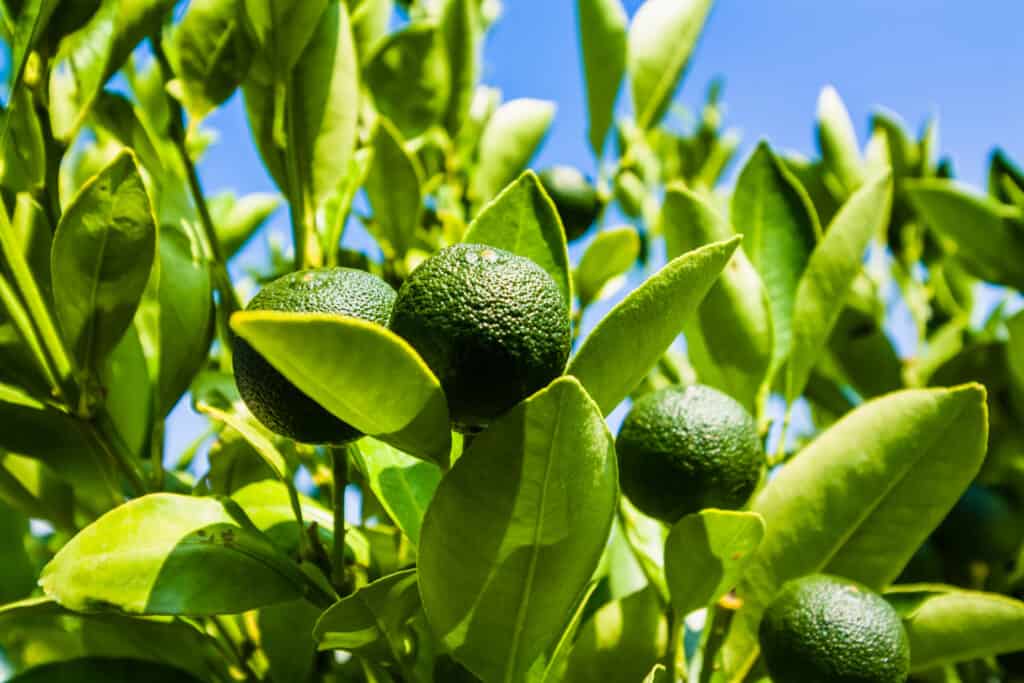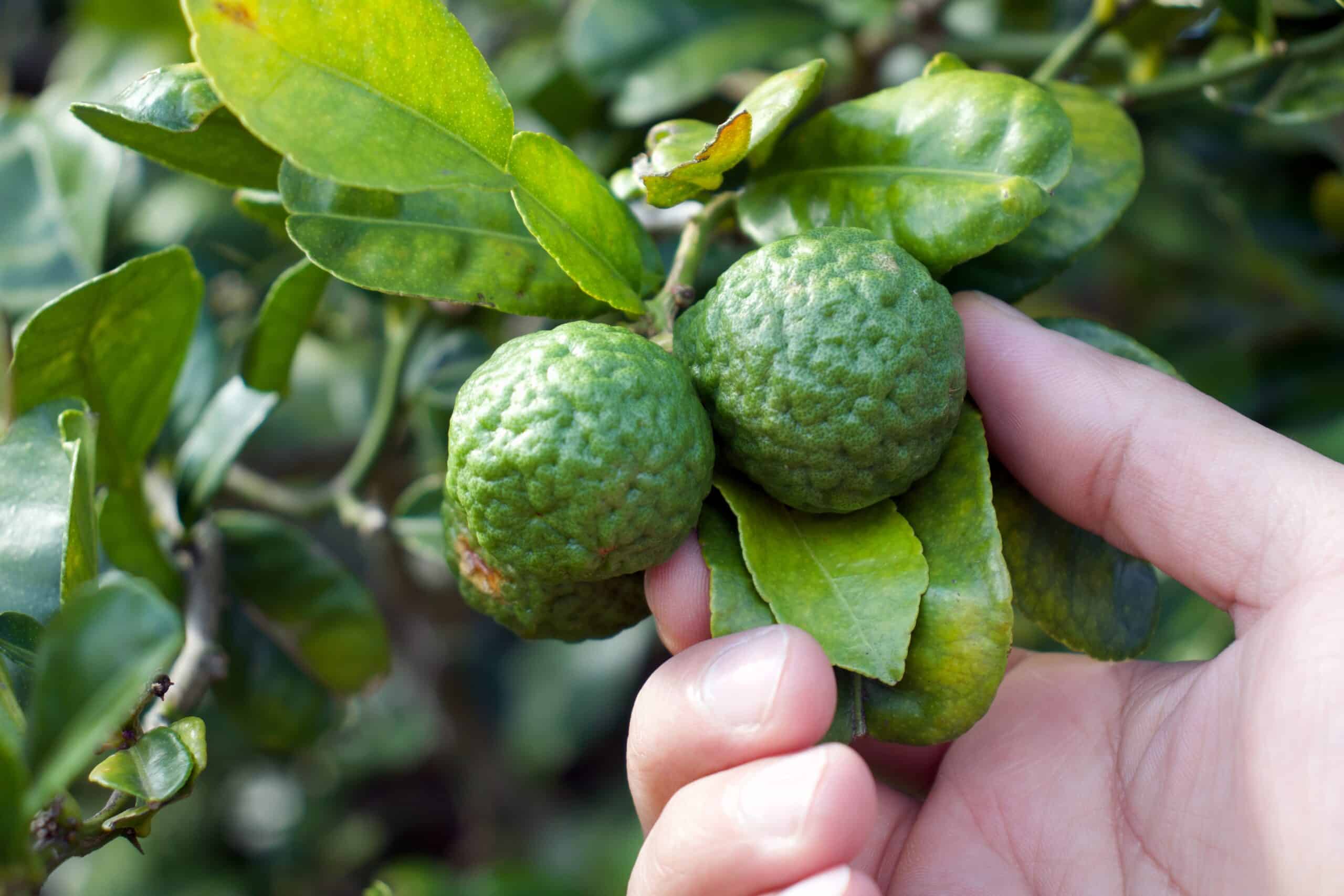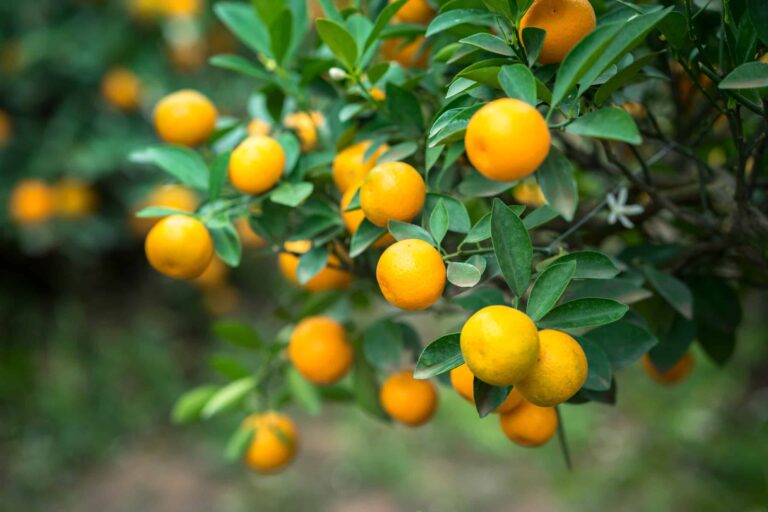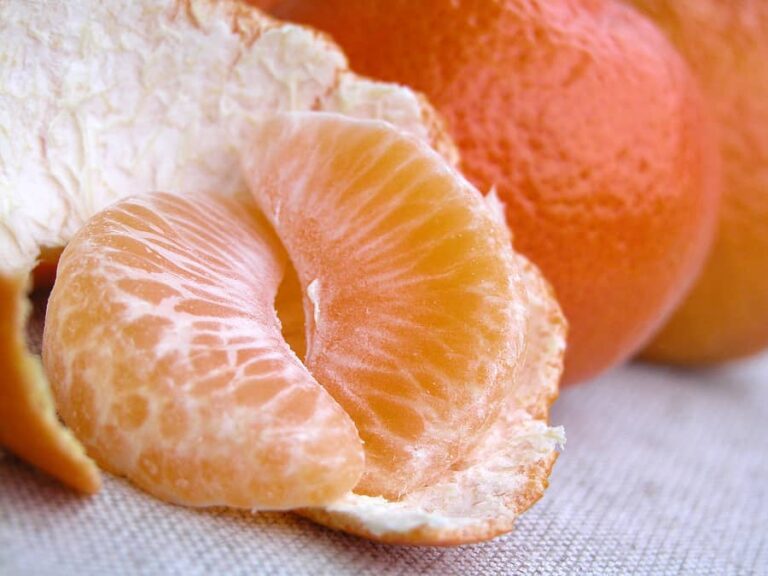How to Grow Lime Trees in the Home Garden
Limes are too tart to eat on their own, but like lemons, they add a refreshing tang to both sweet and savory dishes.
Limes are grown mostly in Florida, California, along the Gulf Coast, and in Mexico. Limes are the least cold-tolerant of citrus fruits. They are best grown where summers are hot and winter temperatures do not drop below 20°F. Limes will not fruit if temperatures drop below 27°F after the tree has flowered.
Related articles:
- Ways to Serve Oranges
- Ways to Serve Mandarin Orange
- Ways to Serve Lemons
- Ways to Serve Grapefruit
- Ways to Use Limes

Types of limes
Limes can be divided into two groups: large-fruited limes and small-fruited limes.
Small-fruited limes are known as Mexican limes. They also are called West Indian limes, Key limes, and bartender’s limes. (These are all the same fruit.) The Mexican lime is small, about 1 to 2 inches across. The fruit has a rich, aromatic flavor. The fruit is deep and borne on a small thorny, tree-shrub that grows about 6 to 13 feet tall. In Florida, the Mexican lime is known as the Key lime. The fruit is preferred for marmalades and Key lime pie.
Large-fruited limes are known as Persian limes and also by other common names including Bearrs lime, Tahitian lime, and seedless lime. The fruit is about 2½ inches in diameter or with slightly nippled ends. It is often picked green but yellows as it ripens. It grows on a nearly thornless tree that can grow to 20 feet tall. The Persian lime is a few degrees hardier than the Mexican lime. The fruit is juicy and used to make limeade and marinades; if sliced thin Persian limes can be eaten rind and all.
The differences between the Mexican lime and Persian lime are pronounced. Here are a few easy ways to distinguish between the two: the Mexican lime fruit is smaller; the tree is thornier and less vigorous, the leaves are small and pale. The Persian lime fruit is larger and virtually seedless; the fruit is less aromatic and less flavorful than the Mexican lime. The Mexican lime is more sensitive to cold than the Persian lime—the Mexican lime requires more heat to develop fruit. The Mexican lime grows best in frost-free, humid, semitropical climates such as Mexico and Florida (where lemons do not grow well). The Persian lime will grow where lemons grow, drier less tropical California, for example.

Grow limes as you would other citrus trees. See How to Grow Citrus.
Best climate to grow a lime tree
- Limes grow best in semi-tropical and warm-temperate regions. The lime is more sensitive to cold than the lemon. Grow limes in protected areas.
Where to plant
- Plant a lime tree in any warm, sunny spot sheltered from the wind.
- Choose the warmest spot in the garden; allow enough room for the tree to grow to its mature size. A standard-size tree will need 20 to 25 feet tall and wide.
- Roots will extend beyond the tree dripline so choose a place where neighboring roots will not interfere with growth.
- If planting in a lawn remove a 3- to 5-foot circle of lawn to eliminate competition from grass roots.
- The Mexican, West Indian, and Key lime are suited for alkaline rocky soil but will grow in deep, acidic, sandy soil. It will produce less fruit in acidic soil.
- The Persian lime is suited for alkaline rock soil and sandy and acid soil.
- Mix shell rock in acid soil to improve the growth of limes.
- The Rangpur line can be grown in almost any soil.
- West Indian limes should be protected from cold winds.
When to plant a lime tree
- Planting time should allow for the longest period of mild or warm weather before extreme hot or cold temperatures; this will allow the plant to become established.
- In freeze-prone areas, plant in late winter or early spring after all danger of frost is past. In hot summer regions, plant in the fall; this will allow the tree to become established before very hot weather.
- Plant in autumn in normally frost-free regions.
How to plant a lime tree
- Dig a hole deeper than the root ball and twice as wide. Rough up the sides of the hole to let the roots grow out more easily.
- Do not amend the backfill or add fertilizer to the bottom of the hole; feed the tree only when it starts to produce new growth.
- Carefully lift the tree from its container; avoid jerking the tree from the container.
- Straighten out any circling roots; cut away broken roots.
- Plant the tree at the same level or slightly higher as it grew in the container; the color of the trunk will tell you where the previous soil level was.
- Pack soil gently around the root ball eliminating air pockets.
- When the hole is half full, fill it with water to settle the soil. Once the water has soaked in, finish packing the soil to the top of the hole and water again.
- Create a watering basin around the newly planted tree; use garden soil to about 6 inches high and wide; you can form an inner wall – creating a donut shape – to keep water away from the trunk.
- Lime trees require less soil enrichment than other plants. Plant them away from plants that need rich soil and regular fertilizer.
Spacing lime trees
- Space lime trees about 22 feet apart. Dwarf trees can be planted about 10 feet apart.
Lime tree pollination and flowering
- Lime trees are pollinated by bees and other insects.
- Most lime trees are self-fertile. You only need one lime tree to produce fruit, but a mix of varieties can result in a better fruit set.
- Lime flowers appear solitary or in small clusters; the white petals are mauvish when young.
- Fruit can take 5 to 6 months to mature after fruit set.
Planting a lime tree in containers
Dwarf and semi-dwarf lime trees can be grown in containers, but the flavor of the fruit will be inferior to a lime grown in the garden or orchard. Lime trees are difficult to grow indoors without supplemental light.
- Both standard and dwarf citrus trees can be grown in containers. Because roots will be restricted in a container, the plant will grow smaller than it would in the ground.
- A container at least 18 inches across should be sufficient for several years.
- Make sure the container has drainage holes. Keep in mind, that moisture evaporates faster from porous pots than nonporous ones, necessitating more frequent watering.
- A wheeled base such as a dolly will make it easier to move the plant to protection during cold weather.
- Plant in light, well-drained potting mix. Do not mix fertilizer into the soil.
- Set the plant at the level it grew in the original pot.
- Allow e or 3 inches at the top of the container for water.
- Firm the soil around the root ball and then water thoroughly.
Lime tree container culture – indoor growing
- Keep the soil evenly moist for potted trees. Use a moisture meter or test the soil with your finger whenever the soil feels dry.
- Water potted trees by pouring over the soil until water flows out the drainage holes.
- Don’t let the plant sit in a saucer full of water.
- Because container plants are watered so often. Fertilizer may be washed away quickly. Use a slow-release fertilizer that will not wash away with each watering.
- Move potted citrus indoors if a freeze is predicted.
- Citrus grown indoors needs bright light. Place the plant near a sunny window but away from radiators or heat sources.
- Sudden changes in temperature can result in leaf and fruit drop.
- The ideal humidity level for indoor citrus is about 50 percent. Overly dry air can result in leaf drop.
Watering a lime tree
- The lime is evergreen and needs water throughout the year.
- Water to keep the soil moist, but not wet. Limes do not like wet soil.
- Water when the top few inches of soil are dry; use a moisture meter to determine how moist the soil is.
- Water the root system but keep the trunk and bud union dry.
- Deliver water to the roots by flooding a basin above the tree root zone or use drip irrigation. Irrigation should wet the entire root zone. Expand the watering area as the tree grows.
Feeding a lime tree
- Feed a lime tree with a citrus food high in nitrogen such as 10-5-10.
- A slow-release organic fertilizer will feed the plant throughout the year.
- Always follow package instructions on the amount and frequency of feeding.
- Feed citrus trees after they put on new growth.
- A nitrogen deficiency can result in leaves turning yellow; apply a high-nitrogen fertilizer.
- A zinc deficiency can result in abnormally small leaves with yellow blotches between the veins; this can occur in alkaline soils. Treat the tree with a foliar spray.
- An iron deficiency can result in young leaves gradually turning yellow between the veins. This can occur in alkaline soils that are poorly drained. Add a chelated iron to the soil.
- A manganese deficiency can occur along with a zinc or iron deficiency; young leaves turn a light green between the veins. Apply a foliar spray.
- A magnesium deficiency can cause older leaves to turn yellow between the veins. Apply a foliar spray or add magnesium sulfate to the soil.
Lime tree routine care – weeding, mulching
- Mulch around lime trees to eliminate weeds which compete for water and nutrients.
- Mulch will keep roots cool and conserve soil moisture in hot weather. Remove mulch if a freeze is forecast; bare soil absorbs more warmth than mulch.
- Compost and leaf mold are suitable organic mulches.
- Keep mulch back from the tree trunk by about a foot to discourage rot.
Thinning and pruning a lime tree
- Prune lime trees only when necessary.
- Remove tangled interior growth to keep the center of the tree open to air circulation.
- Lime trees bloom and fruit on new growth; removing new growth reduces the harvest.
- Allow branches to grow close to the ground in intensely sunny regions. The low growth will protect the bottom branches from sunburn and give a bigger harvest.
- In humid regions, trim up lower branches to improve air circulation and deter diseases.
- In freeze-prone areas, avoid pruning in fall or winter; pruning can stimulate new growth that can be damaged by cold.
- Snip off suckers (rootstock growth) below the bud union on the trunk or underground. Root suckers will not bear the same fruit as the scion above the bud union.
- Remove watersprouts—upright growing shoots that appear on branches on in branch crotches.
- Remove growth that makes the tree lopsided.
- Prune away dead or broken branches.
- Remove dead wood and unproductive twigs and stems; this will allow light and air into the center of the tree.
- Remove the upper limbs if the tree grows too tall.
- On alternate bearing trees that produce a big crop one year and a light crop the next remove some of the fruitlets on a heavy crop year.
Lime tree pest controls
- Control ants with a sticky band on the trunk or use soap spray or ant baits.
- Remove aphids with a strong jet of water or apply soap or oil sprays.
- Remove mealybug cottony masses by hand or hose them off with water or apply soap or oil sprays.
- Mites can attack citrus that is underwatered.
- Scale insects can be suffocated with an oil spray.
- Handpick, trap, or bait slugs and snails.
Lime tree disease controls
- Black rot and fungal diseases caused by rainy weather can be prevented if copper fungicides are applied early enough.
- Greasy spot fungal disease can occur in hot, humid climates; spray the tree with a oil or copper fungicide.
- Fruit brown rot can occur if fungal Phytophthora spores splash on the lower part of the tree; this can cause brown spots on the rind. Prune to improve air circulation.
- Foot rot or gummosis is caused by a Phytophthora infection; sap oozes from cracks. A systemic fungicide may treat the disease.
- Sooty mold feeds on the excrement of aphids and mealybugs; hose off sap suckers
Lime tree environmental problems
- Trees that are alternate bearing can be thinned in heavy fruit crop years.
- Flower and fruit drop can occur if the tree has more flowers or fruit than it can support.
- Fruit splitting can occur if watering is irregular.
- Regreening can occur if ripe fruit remains on the tree during hot weather.
- Sports—leaves or fruit of a different color or shape—can occur occasionally.
- Cold damage can cause leaves and twigs to appear watersoaked. Remove damaged wood and fruit when temperatures moderate.
- Excessive fruit drop can be caused by sudden changes in temperature.
- Sunburn of stems and branches can occur in hot-sun areas; wrap the trunk with paper or cardboard bands.
- Wind damage can occur if trees are not protected from hot, drying winds.
Lime tree propagation
- The Mexican lime is usually propagated by seed. Cuttings from mature wood can be used, but plants may not develop a strong root system.
- The root sprouts and suckers from mature trees can be dug up and planted in compost to establish.
How to harvest limes
Harvest limes when they reach acceptable size; fully mature fruit turns from green to yellow. Limes are marketed green to distinguish them from lemons, but if left on the tree they turn yellow. The ripeness of a lime is determined not by the rind color but by the juiciness of the fruit.
- Most limes are picked immature.
- Most limes remain fresh on the tree, but Tahitian limes keep less well than West Indian limes. The West Indian lime will drop from the tree when fully matured.
- Ripeness is not always reflected in rind color; the best way to tell it citrus is ripe is to pick a sample and try it.
- Fruit will hold on the tree and can be picked as you need it.
- Harvest the entire crop it a freeze is predicted; put the crop in cool storage.
- Harvest citrus by giving it a quick twist as you pull it or by clipping the stem with a hand pruner. Pulling fruit from the tree can result in broken branches or fruit that leaves some rind behind on the stem.
Storing limes
- Ripe limes will keep on the tree.
- Place ripe harvested limes in cool storage.
Limes kitchen use
- Limes can be made into ade, juice, and marmalade; they can be used in soft and hard drinks.
True lime varieties to grow
- ‘Mexican’ or ‘Key’, also called West Indian or bartender’s (Citrus aurantifolia): very small, juicy, and acidic, with a distinctive aroma, picked when green; straw yellow flesh is seedy; rind turns yellow-orange and fruit drops from tree when mature; little flavor difference between green and yellow fruit but do not pick small, flavor increases with size; everbearing, limes at various stages of ripeness are seen on the same plant; medium twiggy tree to 15 feet tall with small leaves, many short thorns (‘Mexican thornless’ is a thorn-free cultivar); very frost sensitive; needs long, hot summers and frost-free winters; in mild climates plant in a sheltered, south-facing hot spot or plant in a container that can be moved during cold spells.
- ‘Persian’ or ‘Bearss’, also called Tahitian (Citrus latifolia): large-fruited lime; fruit is nearly the size of a lemon; acidic, very juicy; true acid lime flavor; thin rind which can be eaten with flesh; usually picked green, yellow when matures on the tree; seedless; peeling difficult; fragrant blossom; shiny fruit harvest in summer in hot regions, in milder climates harvest throughout the year; fruit does not hold well on the tree; medium-size thorned tree with open structure when young becomes dense and round when mature; grow 15 to 20 feet tall; needs less heat to ripen than Mexican –a good choice in California; as hardy as a lemon. These limes are self-fertile.

Lime substitutes (not true limes)
- ‘Kieffer’, also called Kaffir and Kuffre: is not a true lime but a separate species Citrus hystrix; grown primarily for its elongated, notched leaves which are used as a flavoring in Thai and Cambodian cooking; small, bumpy, dark green rind is intensely aromatic; seedy, sour light green flesh with little juice; frost-tender thorny shrub fruit.
- ‘Palestine Sweet‘, also called Indian sweet lime: separate species Citrus limettiodes; small to medium size fruit; thin-skinned turns from greenish to orange-yellow with ripening; the flesh is yellow and juicy; acidless flavor often described as insipid perhaps mildly sweet; popular for juice; few seeds; used in Middle Eastern, Indian, and Latin American cooking; medium-size; bears a single crop in fall or winter; cold-sensitive shrubby plant; ‘Mary Ellen’ is a large-fruited cultivar.
- ‘Mexican Sweet‘: is believed to be a cross between Mexican limes and sweet lemons, a hybrid, not a true lime. They are extremely sweet when ripe without citric acid. They are the same size as a Mexican lime but are more yellowish-green in color. Mexican sweet limes are aromatic, the juice has a deep rich flavor. Mexican sweet lime is hardier than other limes. It can be cross-pollinated with a sweet orange or a lemon tree.
- ‘Rangpur‘: not a true lime but a sour-acid mandarin; actually a hybrid between a mandarin orange and the citron; botanical name Citrus x limonia; often used as a lime substitute; small to medium size fruit; very acidic, juicy flesh; rind turns reddish-orange when mature; peels easily; fruit holds very well on tree; medium-size tree spreading with drooping habit; few thorns; very cold tolerant; ‘Otaheire’ is an acidless semi-dwarf form for containers.
Also of interest:
How to Plant, Grow, Prune, and Harvest Citrus
Related articles:
Planning the Home Fruit Garden
Garden Planning Books at Amazon:
- Vegetable Garden Almanac & Planner
- Kitchen Garden Grower’s Guide Vegetable Encyclopedia
- Vegetable Garden Grower’s Guide
- Tomato Grower’s Answer Book
More fruit-growing articles:
Learn how to plant, grow, prune, and harvest your favorite fruits. Click below for all you need to know.
- Apple
- Apricot
- Avocado
- Banana
- Blackberry
- Blueberry
- Cantaloupe
- Chayote
- Cherimoya
- Cherry
- Citrus
- Clementine
- Cranberry
- Currants
- Elderberry
- Feijoa
- Fig
- Gooseberry
- Grape
- Grapefruit
- Guava
- Kiwifruit
- Kumquat
- Lemon
- Lime
- Loquat
- Mandarin
- Mango
- Melon
- Mulberry
- Muskmelon
- Nectarine
- Olive
- Orange
- Papaya
- Passion Fruit
- Peach
- Pear
- Persimmon
- Pineapple
- Pineapple Guava
- Plantain
- Plum
- Pomegranate
- Pumpkin
- Quince
- Raspberry
- Strawberry
- Tangelo
- Tangerine
- Tangor
- Watermelon




